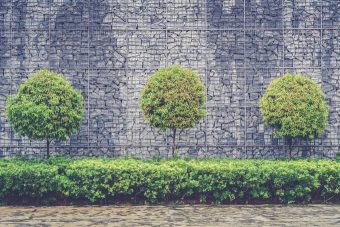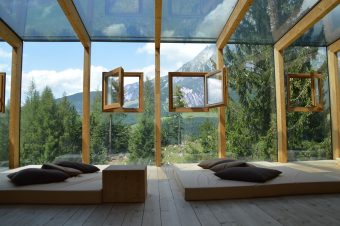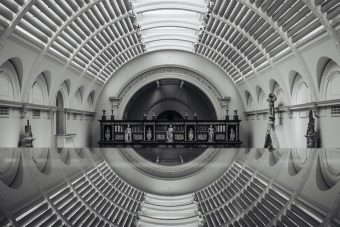In 1987, the World Commission on the Environment and Development defined sustainability as a process of meeting the present needs without compromising future generations and their needs. This definition can be expounded into three main aspects on which sustainability rests – ecology, economy, and society.

Ecological aspect refers to our impact on the environment and surroundings. It can be positive and negative. The key factors in this aspect are energy, its renewability, and consumption, water, air and soil pollution, emission of gases, resource renewal, climate change… The economic aspect includes the prices of material, its transport and processing, energy efficiency, productivity as well as the development of local economy. On the other hand, the social aspect is to provide social equity, preserve cultural heritage, engage and educate the local community, as well as its safety and health.
When we want to characterize something as sustainable, it is important to have in mind that these aspects should not be separated because neglecting either of them will lead to the emergence of an unsustainable system.
Architecture is a discipline that through its practice has a profound impact on all fields of sustainability. The economic development of a country will cause the construction of many industrial, business and residential facilities, and also the economic development of one country will lead to a desire for a larger and more luxurious housing unit. It can be concluded that the growth of the economic status of a social apparatus, a country, business or family, also increases the demand for land and construction materials, which affects the global ecosystem. The challenge of sustainable design is to find technological and design solutions that guarantee the prosperity of this ecosystem.
During its existence, an object affects the local and global environment by various related activities and processes even before it is actually constructed. Exploitation of resources, their processing, production of construction materials and their transport can cause environmental damage of a larger scale. Materials that are not available locally must be delivered from the locations that are on some occasions far away from the place on which the facility is being built. Therefore, even if these exclusive materials are produced with minimal energy consumption, the transport itself will have a negative impact on the environment. The process of constructing an object, although temporary, also affects the environment in terms of the use of energy and resources by creating a construction site and temporary infrastructure for its servicing, making waste and noise…

After the completion of the construction, the very functioning of the building leaves a long-term effect on the ecosystem. Energy and water consumed by the residents of the building are converted into harmful gases and wastewater after use. When a facility loses its function, it does not lose its influence on the environment. If we do not recycle that facility, either in terms of object conversion or literal demolition in order to use the materials for something else, all energy spent on exploitation, processing, production, transport, construction, and maintenance can be considered as a loss.

Problems which sustainable design aims to solve depend on a number of external factors that are contained in three aspects of sustainability. These external factors vary in intensity and type, thus it is impossible to provide universal solutions. The sustainable design actually represents a conceptual framework which helps us anticipate these problems and find a solution with adequate ecological, economic and social qualities. With sustainable design, we try to reduce the consumption of non-renewable resources, promote the use of renewable energy resources, reduce waste to a minimum and create healthy and comfortable places. The principles of sustainable design include optimization of the potential of construction land, use of ecological materials, conservation of energy and water, optimization of functioning and maintenance process of the facilities, as well as the improvement of the conditions for staying and working on the premises.
When positioning a facility on a plot, the existing contour of the site should be taken into account. Major changes in the field are not only costly but also affect the existing microclimate, such as changes in the conventional drainage of the field and airflow, which may be even more important at the moment. In addition, attention should be paid to the level of groundwater – if you expose groundwater to external influence during the construction, you will increase the chances of its pollution. It is recommended that flora and fauna at the construction site become the part of the project in greater percentage so as to maintain the local ecosystem.
By proper positioning of a facility in relation to the environment, an architect adjusts the facility to the natural resources at the site, such as the sun and wind energy, which increases the energy efficiency of the facility and the quality of its space. Thus, the shade during summer is created by planting deciduous trees on the south side of the building (which is the most exposed to the Sun), while in winter the sunlight passes through the stripped branches which results in achieving passive solar heating of the building. By planting the conifers on the north, the facility is protected from cold, winter wind. By combining both principles, the thermal loses of the facility are reduced, as well as the energy consumption for heating or cooling.
The urban environment limits the freedom of positioning in relation to natural resources, and this should be addressed at the urban level by forming parameters for construction of blocks so as to maximize the utilization of these natural conditions. The advantage of cities in terms of the local environment is reflected in the existing infrastructure for the supply of construction sites and buildings, which would have to be planned and whose performance would affect the environment if they were built outside the towns.
Renewable resources are all those resources that can be grown and exploited at a rate that exceeds the speed of human consumption. By definition, the use of these materials is sustainable. Materials made from non-renewable resources (oil, metals, etc.) are not sustainable even if their current supplies are adequate. The use of renewable materials, as much as possible, greatly reduces the need for non-renewable materials.
Read the whole article in the new issue of the Energy portal Magazine on SUSTAINABLE ARCHITECTURE, July 2018.
Prepared by: Petar Veselinovic



